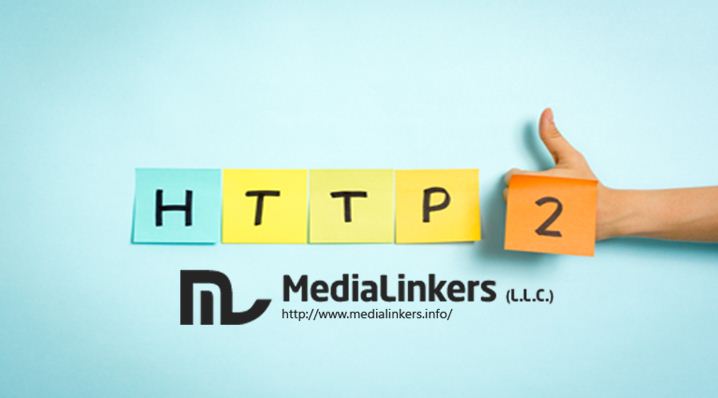Switching to HTTP/2 & what it means for the SEOs?
Jobs

Switching to HTTP/2 & what it means for the SEOs?
- 30 Nov 2015
What Is HTTP/2?
Http/2 is the latest update done by the internet engineering task force made to the HTTP protocol. This protocol is the successor to the HTTP/1.1 drafted in 19999. HTTP/2 is a much-required refresh, meaning that the site has changed over the year. This update brings different advancements with it, in addition to the security, speed and efficiency. This update was based largely on the Google’s own protocol SPDY, which is going to be deprecated in 2016. This protocol has a lot of features made already in HTTP/2 and has been managed to improve the data transmission while keeping backward the compatibility. SPDY has also proven a lot of concepts used in HTTP/2. What Http/2 is about?
Major Improvements in HTTP/2
Single Connection
There is just one connection used for loading a site and this connection remains open as long as the site is open. This reduces the round trips required for setting up the multiple TCP connections.Multiplexing
There are multiple requests which are allowed at the same time and one the same connection. The HTTP/1.1 was transferred to wait for the transfers to complete.Server Push
The additional resources are sent to the client for the future use.Prioritization
The requests are assigned dependency levels, which the server can use for delivering the highest priority resources quickly.Binary
This HTTP/2 makes it quite easy for the server to parse, for a more compact and the less error prone. There is no additional time wasted in translating the information, from text to binary, the computer’s native language.Header Compression
There are a lot of demos out there where you can see the difference in action in the tiled images. It appears that as the latency increases, the speed also increases from the HTTP/2 and becomes even more noticeable, which is great for the mobile users. HTTP/2 also uses the HPACK compressions, reducing the overhead. This means that there are a lot of headers which are sent with the same value in the request in HTTP/1.1.Who Supports HTTP/2?
You’ll also find that most major server software — such as Apache, NGINX, and IIS — already supports HTTP/2. Many of the major CDNs have also added HTTP/2 support, including MaxCDN and Akamai. HTTP/2 is supported by 75% + browsers in US and 67.78 % globally. There are also a couple of caveats to these numbers, as the IE supports the HTTP/2 in windows 10, chrome, Firefox and opera to support HTTP/2 over HTTPs. You can always check how this would affect the site visitors in analytics by going to the audience -> technology -> browser & as compared to the supported browsers.
HTTPS with HTTP/2
While the HTTP/2 supports both the insecure and the secure connections, both the Firefox and Chrome would support HTTP/2 over https. This means that sites which want http/2 would have to be served over https. There are new initiatives such as encryption, going into the public beta on Dec 3, 2015. Let’s encrypt is a certificate providing free security certificate for the sites, as it’s a great initiative towards the secure web.
How would it improve?
This would offer extreme speed for the user experience. As time goes on, people would also learn the limits of the new protocol, making the users see increased speeds on the HTTP/2 connections.
What it Means For Developers?
For developers this means that following:
Domain Sharding
You can load the files from the multiple subdomains for establishing more established connections. This increases the parallel file transfer adds to the overhead server connection.Image Sprites
The image file would have to be loaded before the images are shown and the large image file needs to tie up RAM.Combining different files
JS and CSS are found combined for reducing page requests. This makes users wait and also consumes additional RAM.What it Means For SEOs?
With GoogleBot adding support for HTTP/2, websites that support the protocol will likely see additional rankings boost from speed. On top of that, with Chrome and Firefox only support HTTP/2 over HTTPS, many websites that have not yet upgraded to HTTPS may see an additional boost in rankings when they do.
The problem that SEOs would face is the switching of http's with redirects, as all the 302a instead of 301s, additional hops, chains and cleaning up old redirects would become important. There are various items which have to be first cleaned such as the external links, internal links, duplication issues, mixed content, canonical tags, sitemaps and other tracking systems which have to be changed.
Also, another thing which people don’t realize is that the referral data in the headers in dropped when switching from a site using security to the one without the security. This also means that more traffic is attributed to the direct when it must be attributed to the referring sites. HTTPs also prevent ads from being placed on the sites. As Google has officially made speed a ranking factor, it would be quite interesting to see if the HTTP/2 it becomes a ranking factor and how much of an additional weight would be placed on the additional speed. In short, switching from HTTP to HTTP/2 is beneficial for the users, developers, server admins, sales teams and everyone else involved in the web business. There is no downside to upgrade this and if the users are not able to load over HTTP/2, they would load it like they always have.
Also, according to Bill, a lot of ad networks don’t support https, which means that Google is looking to have more ad space in the market through this protocol. Stay tuned to the blog of medialinkers.info for more interesting and inside news on SEO.
Copyright © 2002 - 2025 Multi-Tech MediaLinkers, LLC. All Rights Reserved

